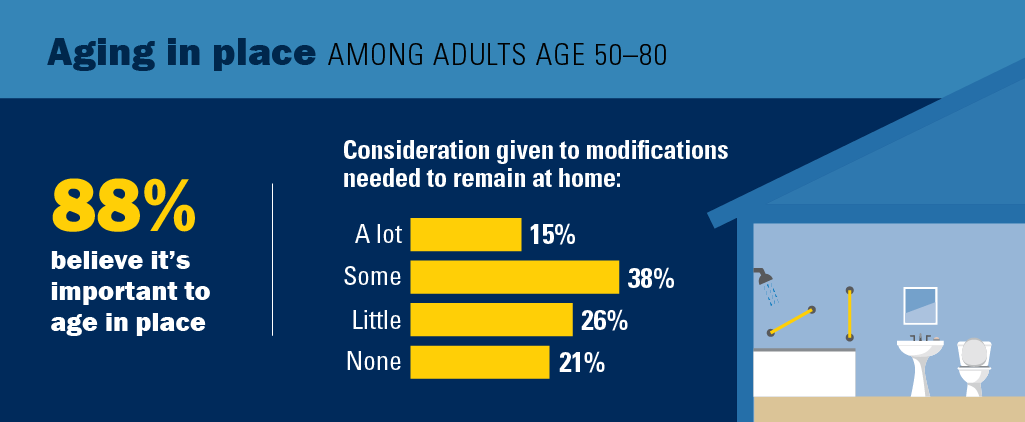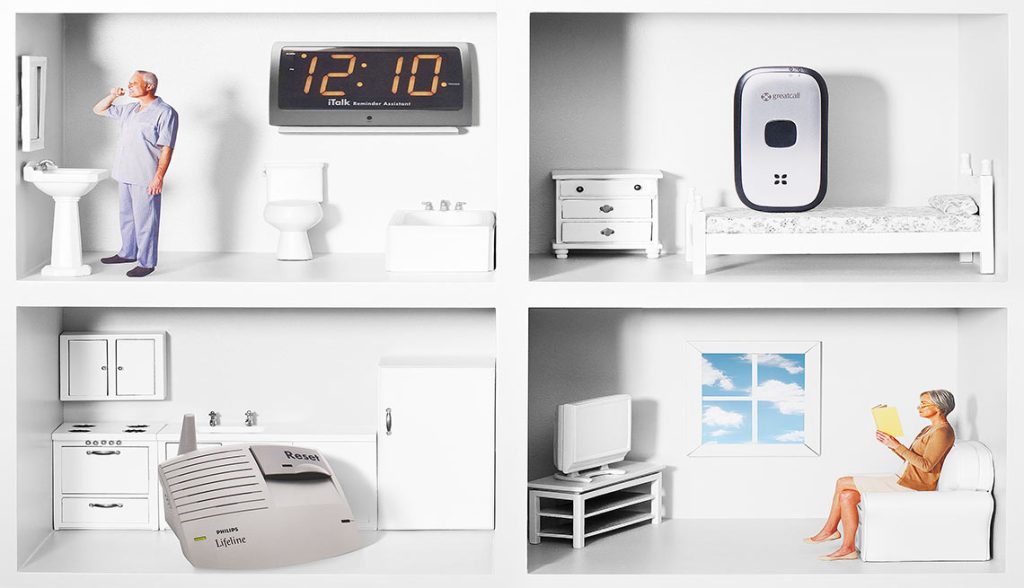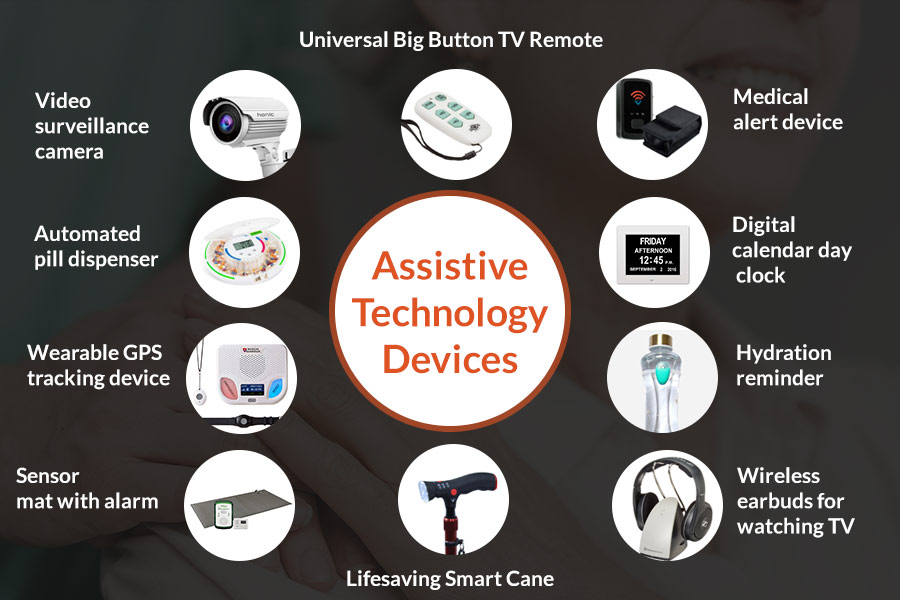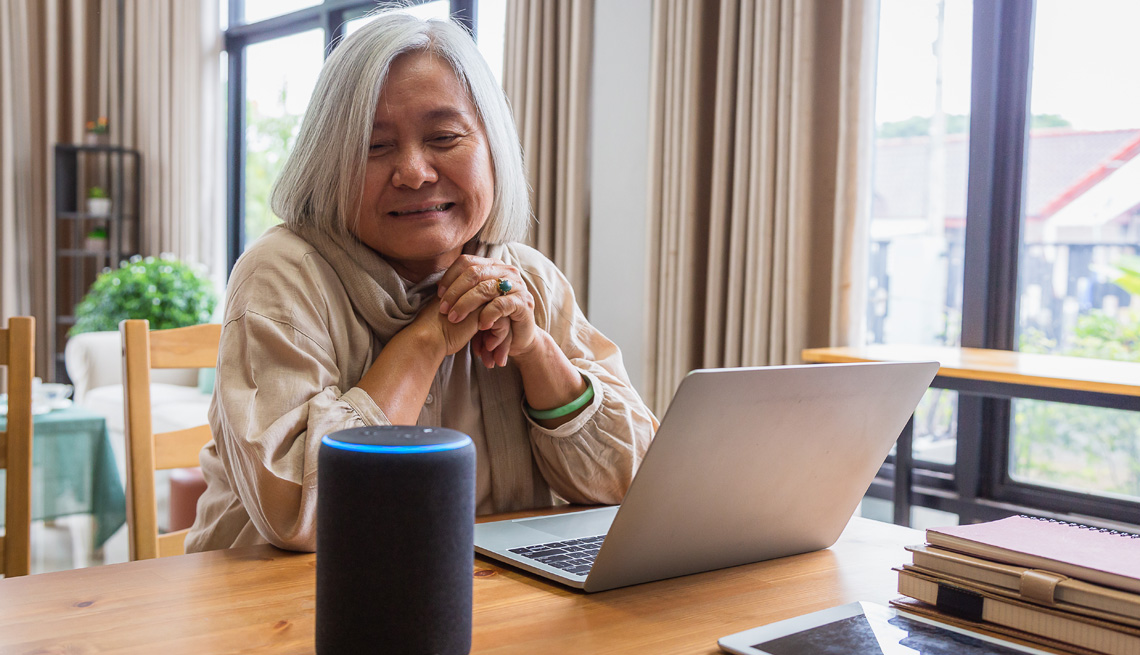Understanding Aging in Place
The concept of aging in place is increasingly becoming a preferred choice for older adults. It involves remaining independent and living in one’s own home for as long as feasible. This trend favors comfort and familiarity, enabling seniors to maintain their lifestyle and routines. However, it’s not without its challenges—ranging from health and safety concerns to social isolation.

The Role of Technology in Facilitating Aging in Place
While aging in place offers numerous benefits, it equally demands support—this is where technology comes in. Innovative solutions make a significant impact in enhancing safety and independence for seniors living at home. From smart home technologies to health monitoring devices, technology has been a game-changer, addressing major concerns related to aging in place.

Technology and Aging: A Symbiotic Relationship
As we advance in the digital age, the role of technology in enhancing the quality of life for the elderly cannot be overstated. Today, we’re seeing a dynamic interplay between technology and aging, where innovative solutions are bridging gaps, improving health and wellness, and empowering seniors to maintain their independence.[1]

From assistive devices, such as hearing aids and mobility aids, to telehealth services that provide remote patient monitoring, technology is revolutionizing elderly care. Furthermore, smart home technology, like automated lighting and voice-activated systems, are providing the elderly with a safer, more convenient living environment.[2]

It’s clear that technology is not just for the young; it’s a powerful tool that can significantly improve the lives of the aging population.[3]
Assistive Devices Promoting Independence in Seniors
In the journey of aging, independence and safety are two prime concerns. Thanks to advancements in technology, a range of assistive devices has been developed to promote these aspects in seniors’ lives. These devices not only increase the comfort, safety, and independence of seniors but also alleviate the pressure on caregivers.
- Medical Alert Systems: These devices are typically wearable units that trigger an emergency response at the press of a button. Seniors can use them to call for help in case of a fall, sudden illness, or any other emergency situation.
- Mobility Aids: Tools like canes, walkers, and wheelchairs can enhance mobility and overall quality of life for seniors. They also help reduce the risk of falls and injuries.
- Assistive Technology for Hearing and Vision Loss: This includes devices such as hearing aids, amplified phones, or screen readers that make communication easier and enhance the ability of seniors to engage with their environment.
By incorporating these devices into their daily lives, seniors can experience a heightened sense of independence and security while aging in place.

Recommendation:
To further enhance the reader’s understanding, consider adding a chart showcasing the usage statistics of different types of assistive devices among seniors.
Telehealth: A Critical Tool for Aging in Place
With the advent of telehealth technology, seniors are now better equipped to manage their health from the comfort of their homes. This technology encompasses telemedicine appointments, remote patient monitoring, and a plethora of digital health tools, all designed to deliver optimal healthcare services remotely.
Telemedicine appointments provide a safe and convenient alternative to office visits, allowing seniors to consult with healthcare professionals without leaving their homes. Similarly, remote patient monitoring tools keep track of vital health statistics, alerting healthcare providers to any potential issues. Digital health tools, such as medication reminders and online patient portals, further promote proactive health management.
Benefits and Challenges of Telehealth for Aging in Place
Telehealth offers numerous benefits, including increased access to healthcare, reduced healthcare costs, and enhanced patient engagement. However, it also presents unique challenges, such as technology literacy and internet access issues.
The potential of telehealth in enhancing safety and independence for seniors aging in place is immense. However, overcoming these challenges requires concerted efforts from all stakeholders, including healthcare providers, technology developers, and policymakers.
For more detailed information on telehealth and aging in place, check out this resource from the National Institute on Aging.
Smart Home Technologies: A New Approach to Aging in Place
The advent of smart home technology has revolutionized the way seniors age in place, enhancing both safety and independence. Home automation systems, for instance, offer the ability to control lighting, temperature, and even appliances with the touch of a button or a simple voice command.

Voice-activated technology, such as Amazon’s Alexa or Google Home, provide hands-free assistance, making it easier for seniors to perform daily tasks, access information, or call for help if needed.
Smart home security systems offer added layers of protection, including surveillance cameras, door and window sensors, and emergency alert systems that can be crucial in ensuring the safety of seniors living alone.
In today’s digital age, these technologies are vital tools to assist seniors maintain their independence, providing a safer, more comfortable living environment at home.
The Importance of Tech Education for Seniors
In the digital age, technology plays a crucial role in promoting safety and independence among seniors. However, technology adoption can pose significant challenges for this demographic. Studies indicate a sizeable digital divide between seniors and younger generations, primarily due to lack of knowledge and fear of technology.

Education is key in bridging this gap.
By imparting tech knowledge, seniors become proficient in using digital tools for health management, social connection, and emergency response, thereby enhancing their safety and independence. Furthermore, tech education arms seniors with the knowledge necessary to protect themselves from online scams and privacy breaches, which are unfortunately prevalent.
However, the effectiveness of tech education for seniors hinges on the right strategies.
Simplicity, patience, and repetition are essential. Additionally, incorporating accessibility features into tech design can make it more senior-friendly.
Ultimately, tech education for seniors is not just about teaching them to use gadgets; it’s about empowering them to live safer, more independent lives.
The Future of Technology and Aging in Place
The future of technology holds immense potential for enhancing the quality of life for those aging in place. Advancements in fields like Artificial Intelligence (AI), robotics, and virtual reality are poised to revolutionize the way we address aging in place.
AI, for instance, can enable smarter home systems that can predict and respond to the needs of the elderly, thereby promoting their independence and safety. Robotics can assist with daily tasks, making aging in place a more viable option for many seniors.
Meanwhile, virtual reality can provide therapeutic solutions that can improve mental health and overall well-being. Whether it’s through virtual social interaction or cognitive exercises, VR can transform the aging in place experience.
These future technologies are not just concepts, but rapidly approaching realities, promising a safer, more independent future for those choosing to age in place.
Conclusion: The Power of Technology in Enhancing Aging in Place
In the realm of senior care, technology has indeed proven itself a game changer. We’ve discussed the pivotal role it plays in facilitating aging in place, significantly enhancing safety and independence for seniors. From remote health monitoring to smart home systems, technology offers a myriad of solutions that allow seniors to live comfortably and safely in their own homes.
We must remember that the importance of these advancements cannot be overstated. As our society ages, the need for such innovations will only increase. Therefore, it’s essential to encourage and support the continued advancements in technology to further cater to those wishing to age in place.
With technology at our side, we can ensure that growing old doesn’t have to mean losing one’s independence or sense of security. It’s time to embrace the future of senior care.





